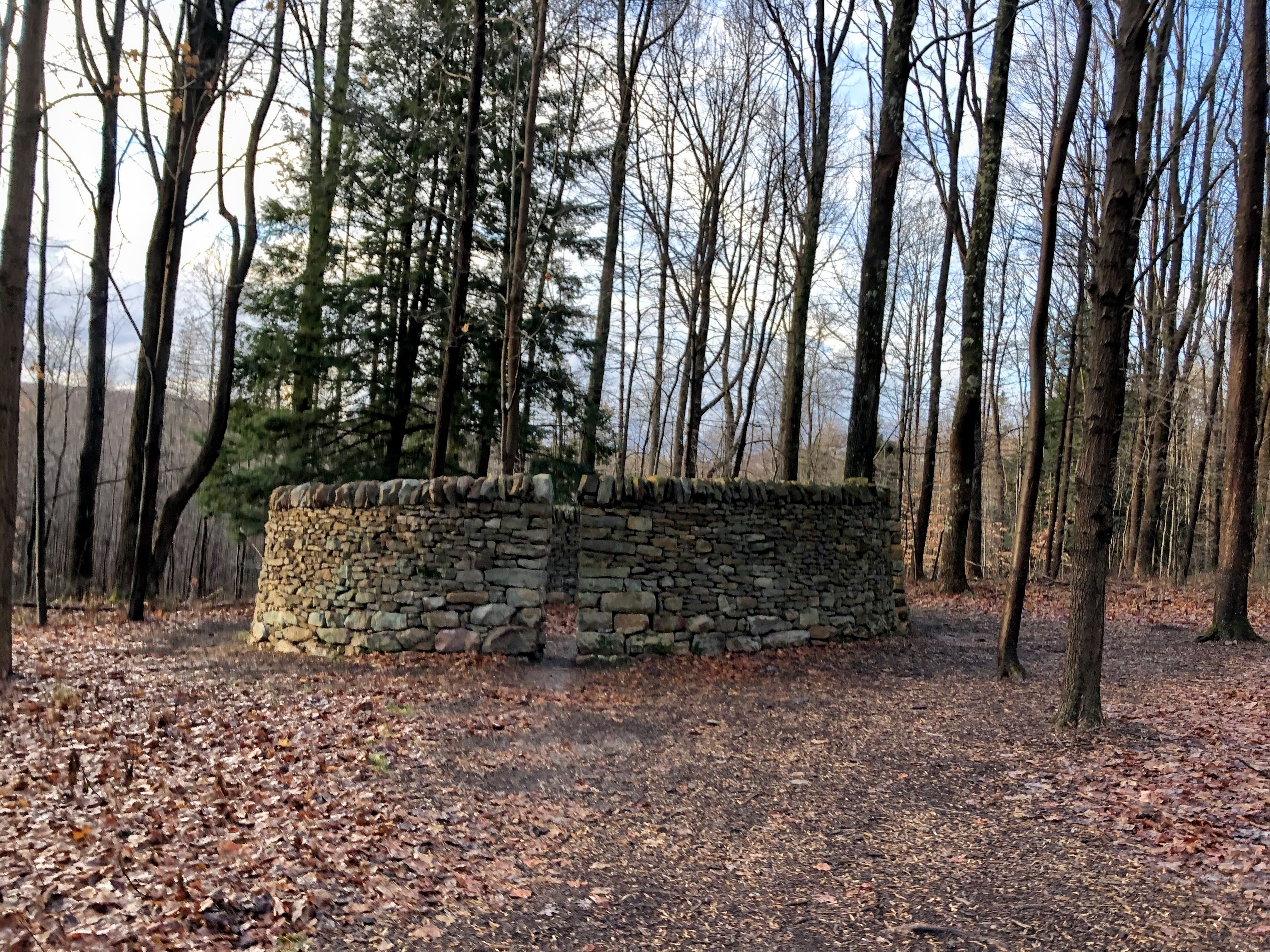Photo credit: by Viola-Ness – Own work, CC BY-SA 4.0, https://commons.wikimedia.org/w/index.php?curid=84661675
https://www.liveenhanced.com/wp-content/uploads/2019/12/8-Andy-Goldsworthy-Art.jpg
I can’t now recall when I first saw a photograph of Andy Goldsworthy’s art. I do recall being stunned and amazed by the colours and shapes in a ‘natural’ landscape -produced by leaves, rocks, spittle, mud, water, thorns … All the more so as I discovered that Andy’s method was to use what he found in the location. He ‘merely ‘rearranged’ what he found. I found it intriguing to learn that in many cases only the photograph he took lasted because having made the artwork and photographed it (itself an artwork, of course) he let nature take its course and wind, water and decay would erode and re-fragment his work.
It spoke -and still speaks- to me at various levels. The first one being the sheer loveliness of colour and form and its harmoniousness with context; field, fell or forest, water and sky. The next level in speaks to me is that of the method of composition: that all the materials are provided by nature directly in situ. For me, as a long-time environmentalist, this is deeply lovely -and that the works then re-enter natural processes and are recycled and re-taken by unhuman nature is in itself an aesthetic experience. I learnt that Andy’s process usually involved spending time in the context, reflecting on the environment and discovering what was there. It seems like a sort of contemplative approach of listening and receptiveness which I find appeals to my spirituality.
As I have reflected on these appreciative responses, I have realised also that some of my response is theological too: that my reception of the images is informed by my understanding of the world as God’s work.
From my childhood I have had a sense of the awe and wonder of the non-human natural world and have sensed the god-ness of it even before I could think more fully about what ‘god-ness’ might involve and be (and I’m using deliberately an unusual and unspecified word here). I have felt there is a deeply implied ethic in the way that all of the natural world borrows from and pays back the ecosystem driven by the energy of the sun and gravity and the electro-magnetic forces at atomic scale. I came to understand that human beings are capable of interrupting and re-fashioning these flows of matter and energy to our advantage and at greater scale than other creatures. And yet I have constantly thought that to do so without consideration and deference to the cycles of nature is a serious unwisdom and dishonouring and disrespectful to the Creator.
What Andy’s work also does for me is enable me to re-echo God’s “It is good” as the photograph and arrangement photographed draw my attention to the comeliness of things. And also by implication I am reminded of the mission of human beings to serve the land (that’s what the Hebrew says in Genesis 2:16) in ways that build on and respect God’s delight and purposes. It seems to me that Andy’s process exemplifies what we should be about as humans in God’s world.
So, Andy Goldsworthy’s art, for me, holds these considerations together: delight in what is made; respect for the way things work and also recognition of the timeliness of things.
In respect to that last point, I find myself hearing in my head some of the words from Ecclesiastes 3. “For everything there is a season and a time for every matter under heaven … God has made everything suitable for its time” (From <https://www.biblegateway.com/passage/?search=Ecclesiastes%203&version=NRSVA> ). Some translations have “made everything beautiful in its time”. We humans are time-beings as well as matter-and-energy things. We do well to learn, as Ecclesiastes encourages us to, that we are not eternal by right; we are part of a changing, transient, forming-and-reforming creation. And come to terms with that.
Andy’s work in its ephemerality reminds me of these things and so invites me afresh to behold myself is small and brief. This is a rightfully re-humbling experience which finds its expression in the church’s year particularly on Ash Wednesday. At the service of ashing we are told “Remember you are dust and to dust you shall return”.
Perhaps, I muse, there is wisdom in recognising the timely beauty of things not only for the ‘grass of the field’ (https://www.biblegateway.com/passage/?search=Matthew%206%3A29%2D31&version=NRSVA) or for our individual lives, but maybe it is a godly-troubling reflection at a time of ecological collapse in relation to our own species.
Though of course, we may want to say more on that theme …
——————————————————————————-
For further reflection
Have a look at some of the pictures in the links below.
When you’ve looked, ask yourself, “Which of these seem to draw me to spend more time with?”
It might be ever so quiet or little, the sense of being drawn to one of the pictures, so don’t be afraid to look and linger until you identify a sense of connection or intrigue or being buoyed up, however slight. (We are often socialised into ignoring these inner movements, and relearning to pay attention is something that need a bit of time and delicacy).
Go back to one of the ones that draws you and spend time looking at it.
You might like to explore your response to it: “how is it ‘connecting’ with me?”, “What does this stir up in me?”
Perhaps you might journal about your reflections. Perhaps you might pick out something in your reaction that could prompt a poetic or visual exploration.
——————————————————————————-
Here are some places to follow up, learn and see more of Andy’s work.




